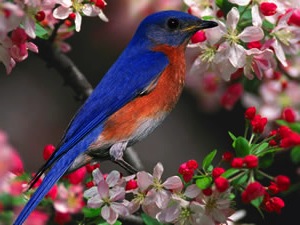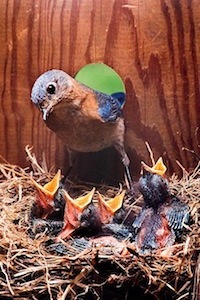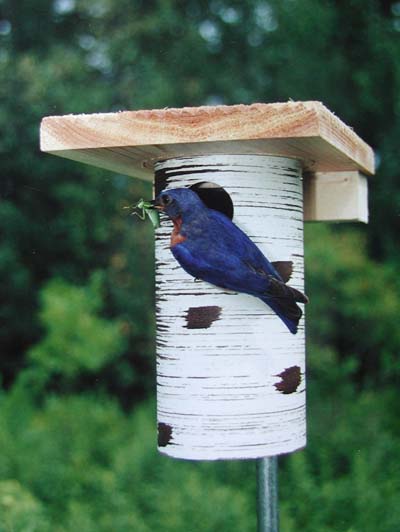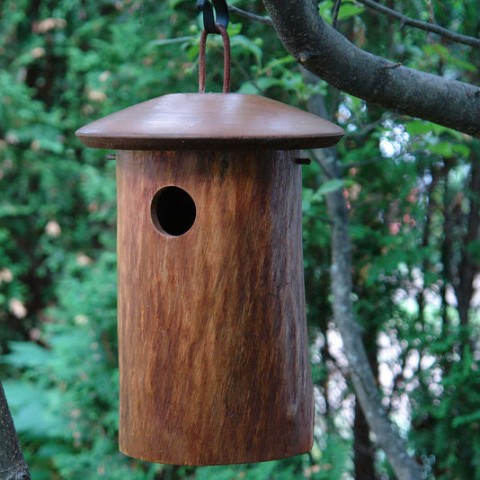-
It’s time to prep bluebird houses for nesting!
Although some days it doesn’t feel like it, spring is just about here. Buds forming on trees are beginning to unfold, while spring bulbs continue sprouting their deep green foliage. In the Southeast, many bluebirds never left for the winter. With accommodations like ours… why would they? Several heated baths and live mealworms fed daily are a pretty good gig for them.
Nest one spotted in the Gilbertson yesterday, and lots of wing-tipping and clamoring over other bluebird houses on the property. This is a good sign that actual egg-laying isn’t too far off. The wing-tipping is a hoot to watch, it’s the male who does this to attract a mate. Each time he waves a wing as if to say “hey… look at me over here, and look at this great nest box!”
Prior to winter, pine shavings were added to all birdhouses around the property. Providing warmth and a decent roost for cold nights and wet freezing days too – the shavings were removed two weeks ago. Each house was inspected for breakage, cracks and squirrel damage. Two metal portals were added to entrances where squirrels had enlarged the hole to gain access. Little boogers even got their own house last fall! Many times you can salvage bluebird houses or any birdhouse where squirrels have chewed the entrance. As long as the damage isn’t too far gone, a metal predator guard, or portal may be attached over the hole.
Typically bluebirds may have two to three broods per season. If conditions are perfect (habitat and weather) you may even see four broods from the same parents! But it’s always the second brood that’s most enjoyable to watch. Juveniles instinctively help raise fledgelings, teaching them where the food is and even helping to feed them. Talk about family ties!
Most bluebird houses are North American Bluebird Society Approved (NABS) will be wood, recycled plastic or vinyl. Other materials are used, but these houses usually are not “approved”. That’s not to say they can’t host a successful brood… just maybe not the best choice? Of most importance, is the distance from the entrance to the floor. If not at least five to six inches, predators may find easy targets. Since many Eastern bluebirds use pine straw to build nests, this raises the chicks even closer to the entrance, so distance is best here. Open space is another prerequisite for hosting bluebirds. Due to their nature of hunting insects, low grasses and natural perches are favored. And of course, the fresh water. A birdbath of any kind will entice bluebirds and others to your place in no time!
Should you decide to try offering live meal worms this year, there’s a simple supplement to greatly help females with the egg-laying process. Calcium carbonate will help prevent egg binding. A situation that’s usually fatal, it can happen if too many worms are consumed, as they are calcium-depleting. For some reason, the egg does not pass through the duct properly, it gets stuck, resulting in probable death. You can still offer worms, just not too many at a time, or maybe consider adding the powdered calcium carbonate supplement as a preventative measure.
A few bluebird houses we’ve had success with (from L to R) The Gilbertson, NABS Approved Vinyl House, and the very cool Mango Wood Natural Bluebird House. We can assure, a bluebird would be happy to call any one of these “home sweet home” 🙂






